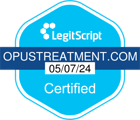Drug Detox Timeline
Introduction
Drug detox is the first step in treating substance use disorder. It clears addictive substances from the body and helps manage withdrawal symptoms. The detox process varies depending on the type of drug, severity of use, and individual physical health. Understanding withdrawal timelines and the stages of drug withdrawal supports a safe recovery journey and reduces the risk of relapse.
Factors Influencing Drug Detox Timelines
Type of Substance
Each class of drugs has a different impact. For example, alcohol detox is faster than opioid detox, but both can involve severe symptoms. Stimulant withdrawal, benzodiazepine dependence, and caffeine use disorder all have unique withdrawal phases.
Severity and Duration of Use
Using illicit drugs or prescription drugs for an extended period can lead to physical dependence and more severe withdrawal symptoms. Chronic opioid or alcohol use disorder often causes prolonged acute withdrawal symptoms.
Presence of Co-Occurring Disorders
Mental health conditions such as panic disorders, depressed mood, or psychological dependence may complicate detox. These conditions can increase psychological symptoms like emotional withdrawal symptoms and mood swings.
Individual Health Factors
Age, physical health, and the presence of a medical condition or chronic pain affect detox. Body temperature, heart rate, and blood pressure must be monitored to prevent complications.
Detox Setting (Home vs. Medical Facility)
Detoxing at a medical detox facility or inpatient setting is safer than attempting detox at home. A medical detox program includes medical professionals, medical staff, and access to medical interventions to manage acute withdrawal and drug withdrawal syndromes.
Detox Timeline for Specific Substances
Alcohol Detox Timeline
- 6–12 hours: Mild symptoms like alcohol cravings, alcohol withdrawal shaking, and anxiety
- 12–48 hours: Risk of alcohol withdrawal delirium and rapid heart rate
- 48–72 hours: Potential for severe alcohol withdrawal and Complications of alcohol withdrawal
- 4–7 days: Symptoms fade, but post-acute withdrawal syndrome and cravings may remain
Opioids Detox Timeline
- 8–24 hours: Early signs of withdrawal include muscle aches, body aches, dilated pupils, and cravings for opioids
- 48–72 hours: Peak symptoms of opioid withdrawal include stomach cramps, muscle pain, muscle cramps, abdominal cramps, nausea, and intense cravings
- 4–10 days: Symptoms slowly improve; long-term opioid withdrawal management may be needed
- Short-acting opioids cause faster onset of symptoms; longer-acting opioids like methadone have a slower opioid withdrawal timeline
Benzodiazepines Detox Timeline
- 1–4 days: Anxiety, panic attacks, and psychological symptoms
- 5–14 days: Peak benzodiazepine withdrawal symptoms with muscle spasms and insomnia
- Weeks to months: Post-acute withdrawal symptoms like emotional symptoms may continue
Cocaine Detox Timeline
- 1–3 days: Crash phase with fatigue, depressed mood, and cravings
- 4–7 days: Psychological drug withdrawal symptoms increase
- 1–2 weeks: Gradual relief, but cocaine withdrawal symptoms can linger
Methadone Detox Timeline
- 24–48 hours: Symptoms of methadone withdrawal begin
- 3–8 days: Peak discomfort, including body temperature changes, muscle pain, and anxiety
- 2–3 weeks: Withdrawal from opioids continues due to methadone’s long half-life
Importance of Professional Supervision
Ensuring Safety During Detox
Medical advice is vital to avoid complications of withdrawal. Abrupt discontinuation can lead to seizures or other health emergencies, especially with barbiturate withdrawal, opioid medication, or alcohol.
Managing Withdrawal Symptoms
A medical drug detox center provides symptomatic medication, supportive care, and treatment for acute naloxone-precipitated opioid withdrawal. This helps manage common symptoms like anxiety, muscle pain, and cravings.
Improving Long-Term Recovery Outcomes
Inpatient treatment, outpatient treatment, and addiction treatment programs help people transition from detox to full recovery. These programs offer behavioral therapy, psychological care, and a full continuum of care.
Detox Techniques
Medication-Assisted Treatment (MAT)
MAT helps with the treatment of opioid use and opioid use disorder. It reduces physical withdrawal symptoms, lowers the risk of overdose, and supports people struggling with prescription painkillers, opioid addiction, or substance abuse.
Holistic Approaches
Holistic therapies include yoga, meditation, and nutrition to reduce the discomfort of withdrawal. These are useful alongside clinical treatments in both hospital settings and closed settings.
Get Help Today
The admissions process at Opus Treatment is fast, supportive, and confidential. Our compassionate admissions team and expert team of healthcare professionals are here to guide you.
Whether you’re dealing with prescription drug withdrawal symptoms, stimulant use disorder, or alcohol withdrawal syndromes, we can help. Our rehab facility accepts most coverage for rehab plans and supports the adult population with access to mental health services backed by the Centers for Disease Control and Prevention, National Institute on Drug Abuse, American Society of Addiction Medicine, and American Psychiatric Association.
Take the step towards recovery with a trusted partner in detox and beyond.
Frequently Asked Question's
The length of drug detox depends on the type of substance, how long it was used, and a person’s overall physical health. In general, detox can last anywhere from a few days to a few weeks. Short-acting opioids like heroin may cause withdrawal for about 4–10 days, while longer-acting opioids or benzodiazepines may lead to withdrawal symptoms that last several weeks. Symptoms can continue even after the acute withdrawal phase ends.
Home detox can be risky, especially when severe withdrawal symptoms are possible. Substances like alcohol and benzodiazepines can lead to serious health issues during detox, including seizures or alcohol withdrawal delirium. A medical detox program at a detox facility offers 24/7 monitoring, medical interventions, and medications to manage symptoms safely. Detoxing under the care of medical professionals reduces the chance of complications and relapse.
Common symptoms include muscle aches, nausea, anxiety, mood swings, dilated pupils, body temperature changes, and intense cravings. Some people also experience depressed mood, panic attacks, and emotional symptoms. The severity and duration of these symptoms vary depending on the drug and the person’s physical and psychological dependence.
Detox is just the beginning of the recovery process. After detox, individuals benefit from entering a structured addiction treatment program. This may include inpatient treatment, outpatient treatment, behavioral therapy, and support for co-occurring mental health conditions. Continuing care helps address the root causes of substance use disorder and builds the foundation for long-term recovery.














